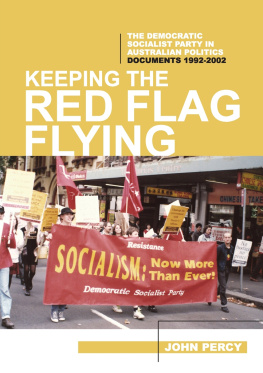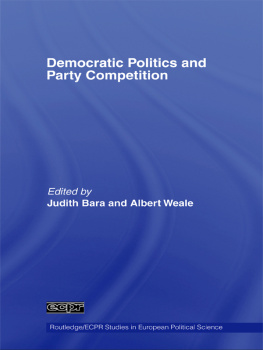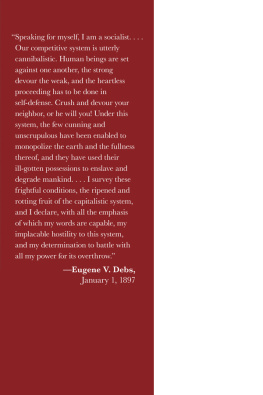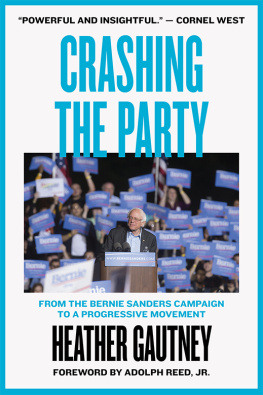First published 2020 by Interventions Inc
Interventions is a not-for-profit, independent left wing book publisher.
For further information:
www.interventions.org.au
Trades Hall Suite 68
54 Victoria Street
Carlton VIC 3053
Design and layout by Viktoria Ivanova
Cover photo: Sydney Mayday 1992, photographer unknown, from the photo collection of John Percy. Used with the kind permission of Eva To.
Author: John Percy
Editor: Allen Myers
Title: Keeping the Red Flag Flying. The Democratic Socialist Party in Australian Politics: Documents, 1992-2002
ISBN: 978-0-9945378-8-1: Paperback
ISBN: 978-0-6451839-6-2 (e-Book)
Series: History of the Democratic Socialist Party and Resistance Volume 3
John Percy 2020
The moral rights of the authors have been asserted.
All rights reserved. Except as permitted under the Australian Copyright Act 1968 (for example, a fair dealing for the purposes of study, research, criticism or review), no part of this book may be reproduced, stored in a retrieval system, communicated or transmitted in any form or by any means without prior written permission.
All inquiries should be made to the editor.
INTRODUCTION
The early 1990s, after the collapse of the Stalinist regimes in the Soviet Union and Eastern Europe, were a time of capitalist triumphalism. Capitals academic hirelings proclaimed the end of history, an absurdity nevertheless repeated in popular media. Really existing capitalism had been proven to be all that was possible, declared those who benefited from it. Socialism, along with the Soviet Union, was dead.
They were wrong about both history and socialism.
In Australia, it was true that the left as a whole had been in more or less continuous decline since the early 1970s, with the waning of the 1960s radicalisation. Among the groups that realised that capitalism was not capable of solving its problems in anything but the short term and only at the expense of working people the largest was the Democratic Socialist Party, which had emerged as the most influential socialist organisation after the collapse and dissolution of the Communist Party of Australia.
With the new, widely read and respected newspaper Green Left Weekly, a sizeable nucleus of experienced cadres and Resistance, a vibrant youth organisation, the DSP was able to orient to the new political climate, including the growth of Green political formations, to seize on new opportunities and to grow modestly. Moreover, it was able to reach out to and help to influence some of the international efforts at rebuilding a revolutionary current.
Well before the turn of the millennium, the end of history had become a sorry joke even for capitalist commentators. The DSP and other socialist organisations were a not insignificant part of ongoing history in Australia. Many of the campaigns and struggles they engaged in are now in danger of being forgotten or, perhaps more commonly, misrepresented.
Today, as new generations take up the fight to stop capitalism from destroying civilisation, the history of these struggles can provide lessons and examples to help illuminate possible ways forward. The documents in this volume, consisting of DSP party-building reports by John Percy, are a very important part of a record that can aid the current generation of activists to learn from the successes and failures of those who have gone before.
The story so far
The first quarter-century of DSP history is described in two earlier volumes by John Percy. Volume 1 Resistance (Resistance Books 2005) covers the years 1965-72 and Volume 2 Against the Stream (Interventions 2017) the years 1972-92.
The story begins in the youth radicalisation of the 1960s, and particularly the movement against the Vietnam War. John Percy, a student at Sydney University, joined the campus Labour Club in 1965 and became involved in antiwar activities, in which he was soon joined by his younger brother Jim.
In the course of their activities, the Percy brothers were won to the political stance of Trotskyism, as advocated by Bob Gould and Ian Macdougall, members of a small and not very active group supporting the Fourth International (FI).
In mid-1967, Gould, John, Jim and others they had persuaded of the need for an off-campus and comprehensive socialist youth organisation, as John wrote at the time, established a group with the unfortunately flippant name of SCREW (Society for the Cultivation of Rebellion Every Where). The more serious name of Resistance was adopted in November 1968.
Resistance soon became internally divided between groupings supporting the views of John and Jim and those supporting the views of Bob Gould. The former saw the youth organisation as only a step towards the eventual creation of a revolutionary political party, while Gould supported a strategy of entryism the idea that revolutionaries should organise only loosely and should conduct their political activities mainly through the Australian Labor Party, hoping eventually to win it, or a sizeable portion of it, to revolutionary positions.
The differences came to a public split shortly before Resistance held its first national conference in August 1970. To indicate the organisations socialist political outlook, the conference changed the name of Resistance to Socialist Youth Alliance. A month later, SYA launched its 12-page monthly tabloid, Direct Action. The editorial in the first issue clearly set out the papers intended role:
To publish a paper without an organisation to build and be built by it is political irresponsibility Only when a paper has an organisation to build, and that organisation has a program to guide it, does a little left-wing venture such as ours take on any meaning.
The fledgling SYA benefited from the still continuing radicalisation. The first five issues of Direct Action achieved average sales of nearly 8,000 per issue, and the organisation itself grew noticeably by the second conference in April 1971. By January 1972, the supporters of a party perspective were able to convene the founding conference of a new organisation, the Socialist Workers League. Direct Action moved to fortnightly publication and became the joint paper of the SWL and SYA.
The choice of the names SWL and SYA was a certain acknowledgement of the Australian groups developing ties with the Socialist Workers Party (SWP) and Young Socialist Alliance (YSA) in the United States. The SWP was a supporter of the Fourth International, despite reactionary legislation in the US that prevented it formally joining. The goal of the SWL was eventually to become the Australian section of the FI. A fillip for this goal occurred at the end of the SWL founding conference, when members of the Labour Action Group (LAG), supporters of the FI based in Brisbane, decided to fuse with the SWL.













